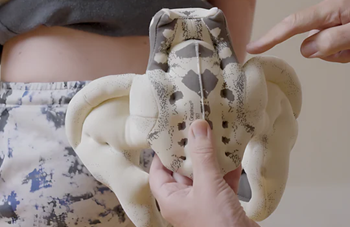
Understanding the Principles of Bowen Therapy
In the landscape of holistic health care, Bowen Therapy—also known as the Bowen Technique—stands out as a gentle yet powerful bodywork modality that has gained increasing attention from nurses, physical therapists, and other health care professionals. Rooted in the understanding that the body is capable of healing itself when given the right stimuli, Bowen Therapy offers a unique, non-invasive approach to pain relief and functional restoration.
What Is Bowen Therapy?
Bowen Therapy is a gentle form of manual therapy that involves subtle rolling movements over muscles, tendons, and connective tissues. These movements are performed in precise sequences with frequent pauses in between, giving the body time to respond and reset. Rather than working forcefully on muscles, Bowen practitioners stimulate the autonomic nervous system to bring about healing.
Developed by Tom Bowen in Australia during the 1950s, the therapy is designed to support the body's natural blueprint for health. The premise is simple: by activating key points on the body, the nervous system receives a signal to address imbalances and restore structural and physiological harmony.
Key Principles of Bowen Therapy
- Minimal Intervention, Maximum Effect: Bowen Therapy uses light touch—so light it may feel like it couldn’t possibly be effective. But this subtlety is part of its genius. The gentle rolling motions prompt a full-body response, addressing not just the site of pain but often its root cause.
- Autonomic Nervous System Rebalancing: The technique targets the parasympathetic nervous system—our “rest and digest” system—helping the body relax deeply and encouraging self-healing. This makes Bowen Therapy ideal for patients dealing with stress, anxiety, or trauma.
- Whole-Body Integration: Unlike treatments that focus only on symptoms, Bowen Therapy views the body as an interconnected whole. A single session may address multiple areas—even ones seemingly unrelated—supporting comprehensive and systemic recovery.
- The Power of the Pause: Bowen Therapy is characterized by regular pauses between sets of movements. These breaks aren’t downtime—they’re critical processing windows, giving the brain and body space to interpret the therapeutic input and recalibrate.
- Client-Centered Approach: Each session is tailored to the individual's condition, pain level, and overall health. The therapy respects the pace at which the client’s body chooses to heal, avoiding overstimulation or aggressive techniques.
Why Should Nurses Learn Bowen Therapy?
Nurses, especially those working in rehabilitation, long-term care, or pain management, are uniquely positioned to incorporate Bowen Therapy into their clinical practice. The technique’s low physical demand on the practitioner makes it sustainable for caregivers, while its broad applications—ranging from musculoskeletal issues to digestive disturbances—enhance holistic patient care.
Continue Your Learning with Pedagogy Education
For healthcare professionals interested in bringing this transformative therapy into their practice, Pedagogy Continuing Nurse Education offers two comprehensive, self-paced online CEU/CNE courses:
- Bowen Therapy Basics: Ideal for beginners, this course introduces the foundational techniques and philosophies of Bowen Therapy, with detailed video instruction and real-life clinical examples.
- Bowen Therapy Advanced: For those who have completed the basics course and are ready to take their skills to the next level. This advanced course covers more complex applications, including protocols for chronic conditions and specialized client needs.
Whether you’re looking to expand your therapeutic toolbox or simply want to support your patients in new, effective ways, Bowen Therapy offers a gentle path to profound healing. And with Pedagogy’s flexible, expertly designed courses, you can start this journey from wherever you are—at your own pace, on your own time.

